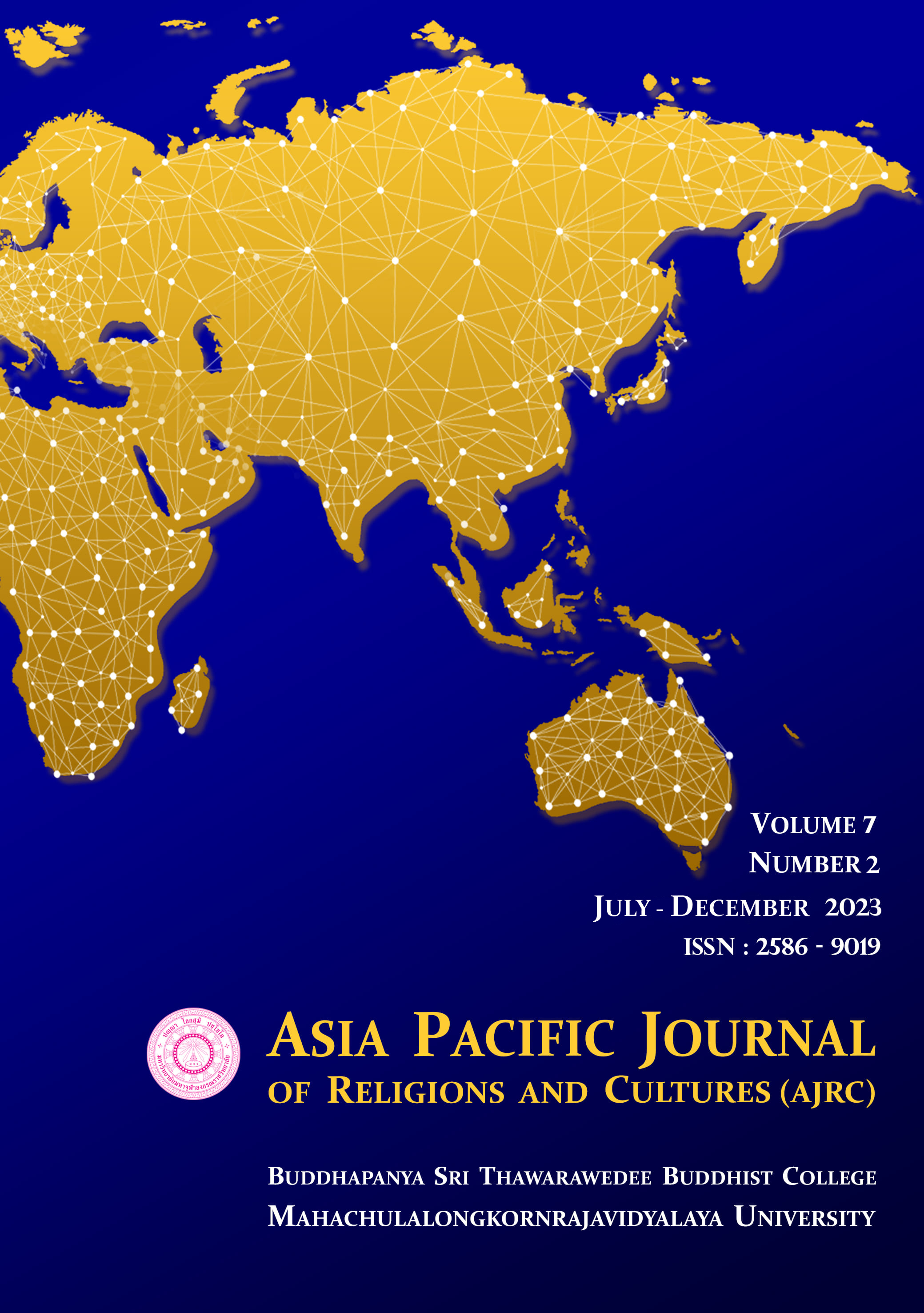HUMAN RESOURCE MANAGEMENT OF FOREIGN TRADE ENTERPRISE IN SHENZHEN, CHINA
Main Article Content
Abstract
The research on Human Resource Management of Foreign Trade Enterprise in Shenzhen, China proposed to 1) study the overview of human resource management, 2) investigate the significant factors causing effective human resource management, 3) find the relationship among the significant factors causing the effective human resource management, and 4) assess the new knowledge implementation for conducting the HRM Guideline of the effective human resource management for foreign trade enterprises in Shenzhen, China. The study was mixed research. The questionnaires were launched to 385 employees, qualitative data was collected with an in-depth interview of 6 HR managers of foreign trade enterprises in Shenzhen.
The results revealed that most respondents were females, at 31-35 years old, were born in foreign countries, with the highest education level in high schools or secondary technical schools in philosophy, literature, and history, having an average annual income between 50,001-100,000 yuan, having worked for 1-3 years, having 26-50 employees, having 11-20 senior managers and more than 20 managers equally, having 5-10 heads of departments, having 25-50 foreign employees, having 51.7% of enterprises have HR departments, and lastly having 54.5% of enterprises agree to establish the HR department. The multiple regression model was Effective HRM = 2.764 + 0.091EE + 0.074TD + 0.071TS + 0.064ES + 0.055PM Effective HRM is the dependent variable, and Employee Engagement (EE), Training and Development (TD), HR Technology and Systems (TS), Employee Satisfaction (ES), and Performance Management (PM) are the independent variables and suggests the contribution of predicting variations in Effective HRM. The coefficients attached indicate the strength and positive direction of their relationship with Effective HRM. New knowledge emphasizes the importance of employee engagement, the value of training and development, the impact of employee satisfaction, and the effectiveness of performance management to make effective HRM in foreign trade enterprises in Shenzhen, China.
Article Details

This work is licensed under a Creative Commons Attribution-NonCommercial-NoDerivatives 4.0 International License.
References
Awais, M. et al. (2017). The Impact of Human Resource Management on Organizational Performance. International Journal of Engineering and Information Systems 1(9): 165-178.
Cicek, I. & Demir, M. (2015). Efficiency of Human Resource Management. Journal of Management, Marketing and Logistics 2(4) 404-4023.
Cooke, F. et al. (2019). Human Resource Management and Industrial Relations in Multinational Corporations in and from China: Challenges and New Insights. Wiley Periodicals (2019) 58: 455-471.
Dung, L. T., Chotechoei, N., & Jaroenchai, K. (2022). Human Resource Management Affecting Operational Efficiency of Entrepreneurship Elderly Care Business in Thailand. Journal of Research and Development Institute, Rajabhat Maha Sarakhram University 10(1): 43-61.
Frank, H. (2017). China’s New Economic Zone Evokes Memories of Shenzhen. Forbes.
Garengo, P., Sardi, A., & Nudurupati, S. S. (2021). Human resource management (HRM) in the performance measurement and management (PMM) domain: a bibliometric review. International Journal of Productivity and Performance Management 71(7) 3056-3077.
Guo,Y. (2019). Canton Kung Fu: The Culture of Guangdong Martial Arts. SAGE Open. 9 (3): 2158244019861459.
Jashari, A. & Kutllovci, E. (2020). The Impact of Human Resource Management Practices on Organizational Performance Case Study: Manufacturing Enterprises in Kosovo. VGTU Press, Business: Theory and Practice 21: 222-229.
Kim, M. J. & Wang, L. Y. (2016). HRM Practices, Organization Culture, and Job Satisfaction: The Case of Korean Small and Medium-sized Companies. Journal of International Trade and Commerce 12(1): 35-47.
Lejonqvist, E. & Othen, N. (2015). Using human capital as a competitive advantage: How small international trading companies work with strategic HRM and how this affects their growth. Retrieved from https://www.diva-portal.org/smash/record.jsf?pid=diva2%3A848936&dswid=5489
Ngan, V. H. & Duyen, D. T. H. (2017). Human Resource Training Effectiveness of Enterprises in the Digital Content Industry in Vietnam. Gestion, Association de Researches et Publications en Management 3(34): 19-46.
Owens, J., & Zhan, J. (2018). Trade, investment, and taxation: policy linkages. Transnational Corporations Special Issue on Investment and International Taxation, Part 1, 25 (2): 1–8. United Nations publication.
Riana, G. et al. (2020). Human resource management in promoting innovation and organizational performance. Consulting Publishing Company: Business Prospectives 8(1): 106-118.
Songkramsri, S., U-on, V. & Teerathanachaiyakun, K. (2016). Relationship Model of Strategic Leadership Effectiveness Human Resource Management and Performance of Thai Vocational Education Institute. Suranaree J. Soc. Sci. 10(1) 41-64.
UNCTAD. (2022). World Investment Report 2022: International Tax Reforms and Sustainable Investment. New York: United Nations Publications.
Vulpen, E.V. (2023). 11 Key HR Metrics. Retrieved from https://www.aihr.com/blog/11-key-hr-metrics/
Textor, C. (2023). Economy: Number of employed people in China from 2012 20 22. Statista. Retrieved from https: //www.statista.com//251380/number-of-employed-persons-in-china.
The National Bureau of Statistics of China. (2022). China’s Implementation of the 2030 Agenda for Sustainable Development: Actions, Strategies, and Contributions. Retrieved from https://unstats.un.org/sdgs/files/meetings/sdg-inter-workshop-jan-2022/6.1-Chinas-Implementation-of-the-2030-Agenda-for-Sustainable-Development.pdf.
Toby, R., Lan, W., & John, P. (2021). The Southampton System: A New Universal Standard Approach for Port-City Classification. Maritime Policy & Management 48(4): 530-542.


